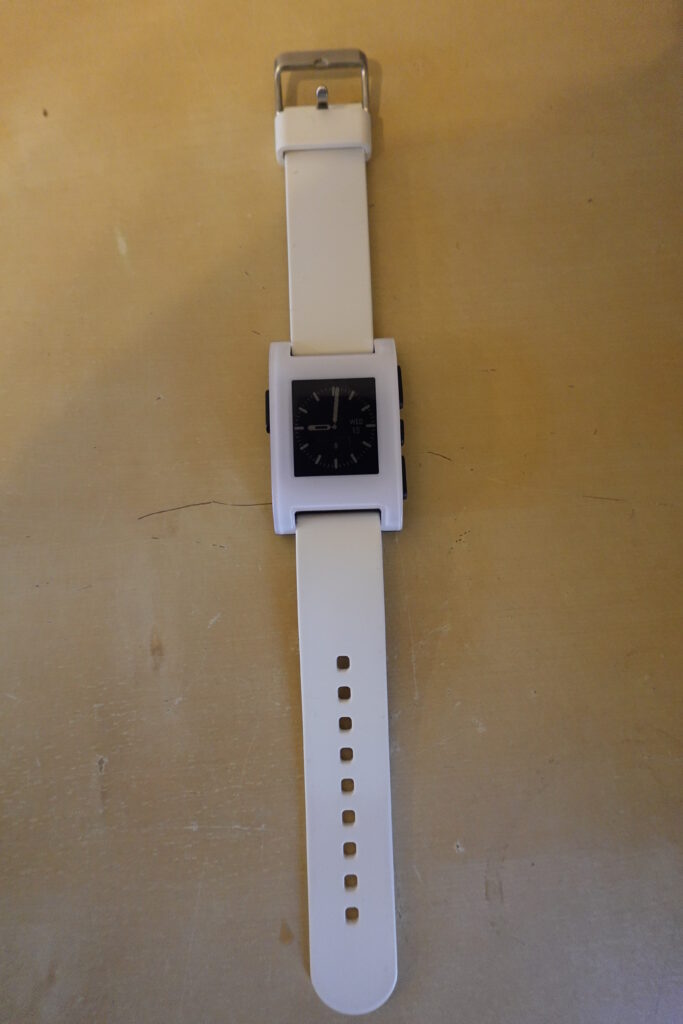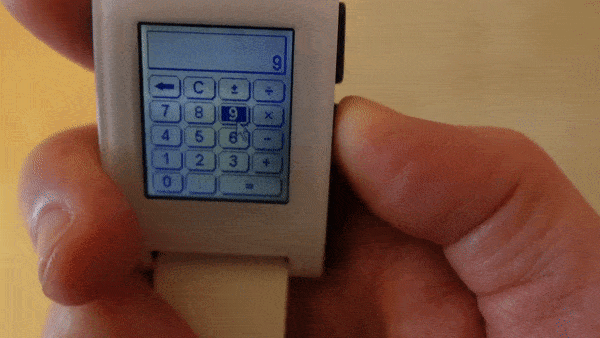The Only Good Smartwatch
In August, a sixteen year old student reverse-engineered iMessage, and published an open-source Python library allowing anyone to send and receive encypted messages with Apple users right from the command line. Crucially, he didn’t “break” the encryption; he simply figured out how to use it, meaning that while Apple has been forcing its users to communicate with all non-iPhone users via insecure, unencrypted SMS messages if they want to use their default messaging app– which they’re also not allowed to change for a different default– JJtech had figured out how to allow the rest of the world to meet iPhone users in their own walled garden when they refuse to or can’t leave it. In a climate where the tech robber-barons are finally undergoing some antitrust scrutiny, interoperability of messaging platforms is an obvious issue to address; and indeed, after years of pressure and openly admitting that lack of interoperability was the goal in order to force people to buy iPhones, Apple has finally said it will adopt RCS in 2024, a secure standard that will replace SMS and, hopefully, if Apple doesn’t break it for their own users on purpose, fix the problems with group messaging that currently exist on the iPhone-Android divide.
Reverse-engineering for the purpose of interoperability is explicitly protected by the Digital Millenium Copyright Act; so a company called Beeper hired JJtech and rewrote his code to create the beginnings of a universal texting app, which would start just as a way for Android users to send iMessages but planned to incorporate RCS, Discord, Whatsapp, and Matrix chats all into one space. Apple moved to shut it down, Beeper got itself back up, and the two are currently in a (probably protracted) cat-and-mouse game of adverserial interoperability.
That’s not actually my point. My point is that I got curious about Eric Migicovsky, Beeper’s CEO; who, it turned out, had also created the first functional and widely available smartwatch.
But not just any smartwatch. The Pebble was the first Kickstarter campaign to raise over $10 million dollars, and created the demand for smartwatches that Apple would later exploit. And, indeed, Apple eventually ran over Pebble like a, well, Mac truck. But Pebble, amazingly, survived, and in a way that Apple devices could never. From ifixit’s Rebble with a Cause: How Pebble Watches Were Granted an Amazing Afterlife:
The next wave of Pebbles focused on fitness, something Apple was already pivoting toward with its second Watch, but Pebble didn’t have Apple’s money. After months of last-ditch fundraising attempts, Fitbit paid a scant $23 million for Pebble’s software assets and engineer hiring rights in December 2016. While Fitbit would not officially support Pebble’s customers, Migicovsky worked out a deal that would refund Kickstarter pre-orders, and, he hoped, keep the more than two million Pebbles sold, and their apps, working for as long as possible.
In hindsight, he nailed it. Pebble has been the most successful hardware company failure in history. Compare this to Revolv, whose acquisition by Nest led to an abrupt shutoff of smart homes around the world, or personal cloud device Lima, or, really, any Android device more than a couple years old.
From the rubble formed Rebble, a team of motivated fans, developers, and ex-employees, rushing to reproduce years of development in a matter of days. Frantic to document critical APIs and development tools before the servers shut off, they grabbed everything they could. The first replacement app store appeared quickly, aptly code-named Panic App Store. Within a few days, they had firmware, core and third-party apps, all the dev tools, and more. And they preserved it all on a wiki, right down to the pinouts.
Meanwhile, Fitbit kept the servers running longer than expected. But the axe would fall in June 2018, and a replacement was needed. Using her inside knowledge of Pebble’s server setup, and painstakingly working through a man-in-the-middle proxy, Berry, the ex-Pebbler, created replacement web services for nearly everything Pebble had provided. With just 16 days until the shutdown, Rebble opened up account sign-ups. When Fitbit finally killed Pebble’s servers, Rebble was ready the next day.
More than 177,000 people have connected their devices to Rebble’s services. Not everything can be free, because the APIs for voice dictation and weather are not cheap—$750,000 per year, if 100,000 people used them, Berry said. And yet, nearly 9,000 people pay yearly subscriptions. Full disclosure, in case you haven’t guessed: I pay for Rebble’s services on my Time Steel, which I wore in our video about … the Apple Watch.
The Rabble project not only has replacement web services, it also has a network of resources for replacing the batteries in Pebbles, 3D printing replacement buttons and cases for them, and is even working on creating entirely new hardware for RebbleOS to eventually run on.
So, I went on Facebook Marketplace and searched them up– and sure enough, there was one for sale close by for a whopping $10. Admittedly, the price point was probably partly because it was one of the very first generation of the watches, probably manufactured around 2013. While later versions were somewhat more refined aesthetically, the original looks like exactly the smartwatch that time travellers from 1960 would expect to find people wearing in 2013:

Anyway, I charged up my new Pebble and followed the instructions on the Rebble setup guide, and within a few minutes had a fully functional smartwatch, with an all-freeware watchface and app store, at my disposal. I joined the very active Rebble discord, where development of both hardware and software is still ongoing, and where they recently hosted their first hackathon for apps and watchfaces, but turned out not to need to ask any questions at all about the process– it just worked.
It’s hard to remember, sometimes, that “being on the computer” used to be fun. Owning and using tech has turned from something that feels like a frontier of discovery and possibility into a kind of grim obligation; the vast majority of devices and internet services are predatory and bad, but you need to use them anyway, and they’re designed to try to make you keep using them even when you actively want to stop, and they’re spreading misinformation and misunderstanding, but what are you going to do about it?
Pebble is fun. Pebble is a good device in the way basically nothing manufactured since is. Although it can put through any level of notification from your phone that you want, and you can install plenty of apps giving you different ways of interacting with those notifications, some of the best apps available for it are things that have nothing to do with your phone at all.
One of my favourites, for instance, is called “wristronome”. It is the best metronome app I have ever encountered. It uses the three buttons on the side of the watch as up/down tempo and start/stop, then uses the very strong vibrations of the Pebble as a metronome. Although there are all sorts of android and iOS metronome apps, almost all of them come with ads, and have weird unusable interfaces that take way too much time just to turn your metronome up a few clicks; so I have been using the same Korg TM-40 since, well, before my Pebble was born. This is the first app that provides a genuine challenger to it. Not only does it do everything it needs to do as a metronome, the vibrations make it appropriate to use in crowded warmup rooms at gigs or auditions; whereas having a loudly ticking metronome on your stand in a room where everyone else is trying to practice and warm up too is kind of rude, this is unnoticeable to everyone but the wearer.
Another of my favourite apps is called Tilt Calculator. Unlike Wristronome, this is, admittedly, not a better calculator than any calculator I’ve tried before. In terms of its ease of use, it’s, well, kind of insane. But that is the point: Tilt Calculator is a completely insane piece of software, something that has never existed before or since, something that could only exist in this particular ecosystem. To operate Tilt Calculator, you tilt the pebble until the cursor rolls over the number you want like a ball bearing in one of those little maze games, and then press the side button to select it.

Indeed, this is not a convenient way of doing arithmetic. But it is an entirely new way of physically manipulating numbers, unheard of until now all the way back to the invention of drawing in the dirt with a stick. Apple would simply never think up something this fun.
There are plenty of other genuinely useful apps– tiny maps for your wrist, health tracking, apps to set a location that it will then lead you back to, etc– as well as plenty of gloriously useless ones. One of the best features of the Pebble, though is probably its battery life; because it has a transflective liquid-crystal display that requires no backlighting in bright environments and draws almost no power to continue showing an image, a new Pebble battery lasts for about 7 days, and even my ten-year-old battery lasts for four days. Compare that to the Apple watch, for which the company claims a new device’s battery will last 36 hours or up to 3 days if you use “low power mode.”
The only downside to my Pebble is that it’s, well, kind of ugly. But then, there are quite a few nicer-looking ones– and now that I’ve discovered the secret of the Only Good Smartwatch, I’ll probably pick one up when it comes up on marketplace of kijiji near me.